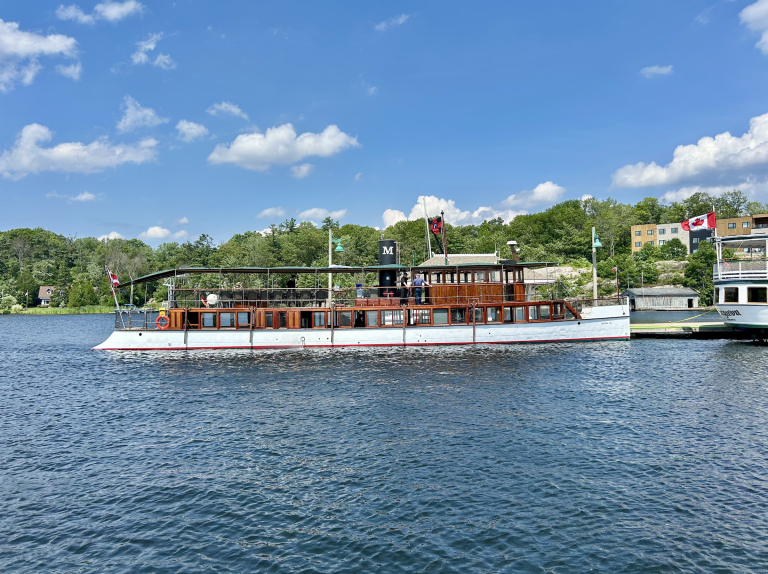Whether you’re a seasoned sailor or a boating novice, anchoring a boat safely and securely is an essential skill. It’s not just about dropping an anchor overboard. It involves choosing the right equipment, understanding different conditions, and mastering specific techniques to ensure your boat stays put.
Anchoring properly can prevent your boat from drifting due to wind or current, avoiding potential hazards. To give a sense of safety, we’ll explore the different types of anchors, the steps to set and retrieve an anchor, and tips to avoid common mistakes. This guide aims to equip you with practical knowledge to make your boating experiences safer and more enjoyable.
Key Takeaways
- Learn the proper steps to anchor a boat safely.
- Understand the different types of boat anchors.
- Discover tips to avoid common anchoring mistakes.
How to Anchor a Boat Properly

Anchoring a boat safely and effectively is a skill every boater needs. Whether you’re planning to swim, stay overnight, or just take a break, here’s what you need to know:
Choosing the Right Spot: Find a location with good holding ground, such as sand or mud. Avoid areas with strong currents or rocky bottoms.
Prepping Your Anchor: Ensure your anchor is ready. You should have enough chain or rope, and the anchor should be appropriate for your boat’s size and the seabed.
Approaching the Spot: Approach the chosen spot slowly, heading into the wind or current. Use your bow roller to guide the anchor rope or chain as you lower it.
Dropping the Anchor: Slowly lower the anchor from the bow cleat until it reaches the bottom. Don’t throw it overboard, as this can tangle the chain or rope.
Setting the Anchor: Once the anchor is on the seabed, let out more rope or chain, usually five to seven times the depth of the water. This gives the anchor a good angle to dig in. Reverse the boat gently to ensure the anchor is set firmly.
Securing the Boat: Tie the rope or chain securely to a cleat or use a windlass if available. This prevents any movement once the anchor is set.
Checking Your Position: Monitor your boat’s position to ensure it’s not drifting. Use landmarks or GPS to verify your boat is holding steady.
Determine Your Boat Anchor Type
Choosing the correct anchor for your boat guarantees your vessel stays put. Consider your vessel’s size before anything else. If you have a small recreational boat, you can likely opt for lighter anchors. For larger vessels, beefier anchors are necessary to handle the increased weight.
Next, think about the water conditions where you’ll be anchoring. Bottom surfaces vary—sandy, muddy, rocky, or grassy. Different anchors are optimized for these conditions.
For instance, fluke anchors excel in sand or mud, while plow-shaped anchors like the Delta or Rocna work better in rockier environments. Both stainless steel and galvanized steel anchors are resilient and can endure harsh environments, including saltwater.
Also, don’t overlook environmental conditions. Tides, wind resistance, and wave turbulence can all affect how well your anchor holds. A scope ratio of 7:1 is often recommended, meaning you need seven feet of anchor rode for every foot of water depth. This helps ensure your anchor sets correctly and holds strong.
Remember, having a versatile ground tackle setup can save the day. It might be worthwhile to invest in multiple anchor types to keep on board. That way, you’re prepared for whatever the waters throw at you.
Which Type of Boat Anchor Do You Need?
Anchors by Sea Floor Type
Choosing the right anchor depends a lot on the kind of seabed you’ll be dealing with. Each type of bottom condition calls for a different anchor style:
Hard sand or thick mud:
Danforth anchors are a great choice for recreational boats 21 feet and under. These lightweight anchors have long flukes that resist buildup, making them effective in hard sand or thick mud. Available in various weights, they ensure a reliable hold.
Grass or rocky bottoms:
Kedge and Navy anchors are your go-to here. Mostly used by larger ships, their design grips well in weedy, grassy, or rocky conditions. They might seem hefty, but they get the job done.
Mixed conditions:
If your boating area has varied bottom conditions, Plow/CQR or Delta anchors are safe bets. Plow anchors are particularly good for cruisers, as they adapt to changing environments and grip well when dragged. Delta anchors, fitting for boats between 21 and 50 feet, are versatile across most conditions.
Some Essential Anchoring Terminology
Understanding some key terms can make your anchoring experience smoother and safer:
Cleat: The fixture on your boat or dock where you tie the anchor line. Typically made of metal, though wood or nylon can also be used. Always check for stability.
Shank: The long, straight part of an anchor. It’s where you handle or attach the anchor line.
Flukes: These are the arms of the anchor designed to dig into the seabed, giving you that crucial grip on mud, sand, rocks, or clay.
Rode: The anchor line, which can be rope, chain, or a combination of both. The type you choose depends on various factors, including your boat size and water conditions.
Scope: This measures the length of rode let out relative to water depth. A 5-1 scope means five feet of rode for every foot of water depth. Experts recommend a ratio of at least 5-1, 7-1, or, if you can, 8-1 for better hold.
Ground tackle: An umbrella term for all the equipment involved in anchoring—anchor, rope, chain, and any connecting parts.
Holding power: This indicates how much weight your anchor can support. Always match the holding power to your boat’s size to ensure safety.
Steps to Properly Anchoring a Boat

When you need to anchor your boat securely, follow these steps to ensure a safe and stable anchorage:
Choose Your Spot
- Check the area around you for safety and sufficient water depth.
- Avoid reefs, dense vegetation, and rocky areas to prevent anchor snags and damage.
- It’s often best to position your boat to windward of an obstruction to minimize wind effects.
- Keep a safe distance from other boats, especially in crowded areas.
Wear Protective Gear
- Ensure everyone involved in the anchoring process wears a life jacket or another personal flotation device.
- For rough conditions, ask all passengers to also wear safety gear.
Reduce and Reverse
- Gradually decrease your throttle and reverse your engine to bring the boat to a near standstill.
Secure the Line to the Bow Cleat
- Tie the anchor line securely to the bow cleat.
- Ensure the knot is strong enough to handle the stress. Weak knots can result in losing the anchor.
- For overnight anchoring, add a chain equal to half the boat’s length to your anchor rode for added security.
Lower the Anchor Gently
- Carefully lower the anchor over the side until about one-third of the anchor line is submerged.
- Avoid throwing the anchor or releasing all the line at once. Hold the railing with one hand to maintain balance.
Test the Anchor’s Stability
- Once the anchor reaches the bottom, gently pull on the line to check its grip and stability.
- This helps ensure that the anchor is securely embedded before releasing more line.
Let Out the Scope
- Calculate the required scope ratio, ideally 8:1 (8 feet of anchor line for every 1 foot of water depth).
- Release the anchor line to reach the calculated scope.
Check for Drag
- After setting the anchor, monitor your boat’s position to ensure it’s not dragging.
- Use a depth sounder, if available, and some systems may include an anchor alarm to alert you if the boat moves.
Take Bearings
- Identify at least two fixed landmarks or features, such as buildings or mountain formations.
- Measure the angle and distance between these landmarks and your boat to monitor its position and detect dragging.
Retrieving the Anchor
When it’s time to raise the anchor, the process should be methodical to avoid any issues.
Steps to Retrieve the Anchor:
- Grip the Line: Hold the rope or chain near where it’s tied to the boat (the cleat). Start to pull the rode (the rope or chain attached to the anchor) back onboard.
- Avoid Dragging: Be gentle to ensure the anchor doesn’t drag along the sea, lake, or riverbed. Dragging can cause the anchor to snag on rocks or vegetation and even disturb fish habitats.
- Pull Methods: Use either a slow, steady pull or a quick, firm tug depending on how the anchor feels.
Dealing with a Stuck Anchor:
- Turn the Boat: Try changing your boat’s direction. You can idle into the wind or circle around. Have someone hold the rode to feel for any movement.
- Add Tension: If changing direction doesn’t help, you might need to add tension. Wrap the line once more around the cleat and let the natural motion of the wind and water work to free the anchor.
- Use a Retrieval Ring and Buoy: These boating tools can serve as a makeshift pulley system. This can be particularly helpful if your anchor is tangled in weeds or tucked beneath rocks.
In safe, shallow waters, attempting to retrieve the anchor by hand could be an option. This means diving or snorkeling down to manually free it. However, always prioritize safety. Never try this if you’re alone or if the water conditions are not favorable.
In worst-case scenarios, if all else fails, you may have to cut your line and accept the anchor as a loss. If this happens, marking the location with GPS can prevent future mishaps in the same area.
Common Mistakes to Avoid
Anchoring mistakes can lead to dangerous situations and damage to your vessel. To stay safe and avoid trouble, keep the following points in mind:
- Tangling the Line: Keep items like coolers, shoes, and fishing gear out of the anchor line’s path. Ensure all passengers maintain a safe distance to prevent arms or legs from getting caught in the rope.
- Anchoring by the Stern: Tying your rope or chain to the stern is a no-no. This can lead to taking on water, swamping, or even capsizing.
- Forgetting Extra Supplies: Always carry a backup anchor and line onboard. This will be a lifesaver if your primary anchor gets stuck in the mud or rocks.
Tips for Anchoring a Boat

Anchoring a boat successfully requires more than just knowing the steps; it involves understanding and practicing the technique. Here are some practical tips you can follow to ensure a smooth and safe anchoring experience:
Know the Rules: Be aware of any local, state, or private water regulations regarding anchoring. Pay attention to visible markers and stay informed about the guidelines.
Pick the Right Boat: If you’re in the market for a boat, look for features that make anchoring easier, like a bow rail, secure cleats, an anchor locker, and a chain stop.
Stay Vigilant: Never leave your boat unattended for too long, especially in public areas. Keep an eye on your vessel and be considerate of other boaters looking to anchor.
Regular Inspections: Before each outing, inspect your anchor and line for any signs of damage or wear. Repair or replace them as necessary to avoid any surprises on the water.
Practice Makes Perfect: Whether you own a small boat or a large vessel, clear communication is essential. Develop a plan and practice your anchoring techniques with your crew. Establish both verbal and non-verbal signals to indicate when the anchor is being lowered, raised, or is stuck.
Consider practicing these techniques regularly to be prepared for any situation. Informed and prepared boaters can anchor confidently, ensuring a safe and enjoyable time on the water.
Frequently Asked Questions
How do you secure your boat for an overnight stay on the water?
To ensure your boat is safe for an overnight stay:
- Choose a well-protected spot: Look for a quiet bay or a protected cove.
- Assess the depth: Use a depth sounder to find a suitable depth.
- Use the 7:1 scope ratio: For every one foot of depth, let out seven feet of anchor rode.
- Anchor securement: Once you’ve let out enough scope, attach the rode to a bow cleat.
- Set the anchor: Apply power in reverse to ensure the anchor is well-set in the bottom.
Can you describe how to stabilize a boat with a dual anchoring system?
Dual anchoring involves using two anchors:
- Positioning: Place one anchor at the bow and another at the stern.
- Deployment: Drop the bow anchor, ensure it’s set, then slowly drift back.
- Setting the stern anchor: Drop the stern anchor and pull both rodes taut to hold the boat firmly in place.
- Adjustment: Adjust the tension on each anchor line to mitigate swinging.
What’s the best approach to anchor a boat in strong winds?
To anchor safely in strong winds:
- Use a heavier anchor: A heavier anchor provides a better grip.
- Use a scope ratio of 10:1: This will provide extra holding power.
- Anchor in the lee of land: Anchor in the lee of land where the wind is less intense.
- Double-check: Ensure the anchor is firmly set by applying reverse power and checking for dragging.
How should you anchor for a strategic fishing position?
For an optimal fishing anchor setup:
- Pre-plan your spot: Choose a location where fish are active.
- Set up the boat’s drift: Position so the current or wind drifts the boat over the fishing area.
- Use the right anchor: A fluke anchor is useful for smaller boats.
- Monitor and adjust: Keep an eye on the boat’s position and adjust the rode as needed to remain over the fishing spot.
What anchoring techniques keep your boat in place on a lake?
For anchoring in a lake:
- Look for a firm bottom type: Look for a sandy or muddy bottom where anchors hold well.
- Use a fluke or plow anchor: Choose the anchor type based on the size of your boat.
- Lower the anchor manually: Lower the anchor and let the boat drift back, paying out the rode slowly to prevent it from piling up.
- Secure the anchor: Ensure the rode is securely fastened and set by applying a gentle reverse thrust.
How deep should the water be relative to your boat for anchoring?
When choosing an anchoring spot:
- Depth consideration: Measure the water depth with a depth finder.
- Scope ratio: Use a scope ratio of 7:1. For example, in 10 feet of water, let out 70 feet of rode.
- Depth buffers: Ensure sufficient depth to accommodate tide changes without grounding or drifting.
- Anchor type: Choose an anchor suited for the depth and bottom type to enhance holding power.







